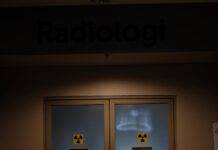
Radiation Therapy Safety: Patient and Worker Protection Measures
Introduction
Radiation therapy is a crucial and effective treatment modality in the management of various cancers. While it offers significant benefits, ensuring the safety of both patients and healthcare workers is paramount. This article delves into the essential protection measures employed in radiation therapy to safeguard the well-being of individuals involved in the treatment process.
Understanding Radiation Therapy
- Purpose and Benefits
- Targeted Treatment: Radiation therapy uses high doses of radiation to target and destroy cancer cells.
- Curative or Palliative: It can be curative, aiming for complete cancer elimination, or palliative, alleviating symptoms and improving quality of life.
- Types of Radiation Therapy
- External Beam: Radiation is delivered externally using a machine.
- Internal (Brachytherapy): Radioactive sources are placed directly within or near the tumor.
Patient Protection Measures
- Treatment Planning
- Precision: Advanced imaging technologies ensure precise targeting of cancer cells while sparing healthy tissues.
- Dosage Calculation: Careful calculation determines the appropriate radiation dosage for optimal treatment outcomes.
- Positioning and Immobilization
- Accuracy: Patients are positioned and immobilized to ensure accurate and consistent delivery of radiation.
- Minimizing Movement: Immobilization devices reduce the chance of unintended radiation exposure to surrounding tissues.
- Monitoring and Side Effect Management
- Regular Assessments: Continuous monitoring of patients during and after treatment.
- Side Effect Mitigation: Addressing and managing potential side effects promptly to enhance the patient’s overall well-being.
- Education and Communication
- Informed Consent: Providing comprehensive information about the treatment, its benefits, and potential side effects.
- Open Communication: Encouraging patients to communicate concerns or discomfort during the treatment process.
Worker Protection Measures
- Radiation Shielding
- Lead Aprons and Shields: Healthcare workers wear lead aprons and use shields to minimize exposure during procedures.
- Lead-Lined Rooms: Treatment rooms are often lead-lined to contain radiation.
- Distance and Time
- Maintaining Distance: Healthcare providers stay at a safe distance during radiation delivery.
- Reducing Exposure Time: Minimizing the time spent in proximity to radiation sources.
- Personal Protective Equipment (PPE)
- Dosimetrists and Physicists: Wear specialized protective gear when working with radiation sources.
- Regular PPE Checks: Ensuring the integrity and effectiveness of protective equipment.
- Training and Education
- Continuous Learning: Healthcare professionals undergo regular training on radiation safety protocols.
- Emergency Preparedness: Preparedness for unexpected events, including radiation spills or equipment malfunctions.
Facility Safety Protocols
- Equipment Maintenance
- Regular Inspections: Ensuring the proper functioning of radiation therapy equipment.
- Prompt Repairs: Immediate addressing of any malfunctions or irregularities.
- Emergency Procedures
- Evacuation Plans: Clearly defined plans for the evacuation of patients and staff in case of emergencies.
- Communication Protocols: Efficient communication systems for rapid response to unforeseen situations.
- Regulatory Compliance
- Adherence to Standards: Strict adherence to national and international radiation safety standards.
- Regular Audits: Conducting regular audits to assess and improve safety measures.
Conclusion
Radiation therapy remains a cornerstone in cancer treatment, emphasizing the need for robust safety measures. By prioritizing patient well-being, implementing comprehensive worker protection strategies, and maintaining stringent facility safety protocols, radiation therapy continues to contribute significantly to the fight against cancer while ensuring the safety of all involved.
Radiography Hazards and Precautions
How to Calculate Radiation Safe Distance in Industry
Radiography Safety Toolbox Talk Meeting
Frequently Asked Questions (FAQs)
- How does radiation therapy work in treating cancer?
- Radiation therapy uses high doses of radiation to target and destroy cancer cells. It can be curative or palliative, aiming for complete elimination or symptom alleviation.
- What are the types of radiation therapy?
- External beam radiation delivers radiation externally, while brachytherapy involves placing radioactive sources directly within or near the tumor.
- How are patients protected during radiation therapy?
- Patients are protected through precision treatment planning, positioning and immobilization, continuous monitoring, and comprehensive education about the treatment process.
- What measures ensure the safety of healthcare workers in radiation therapy?
- Worker protection involves radiation shielding, maintaining distance and time, proper use of personal protective equipment, continuous training, and adherence to safety standards and protocols.
























